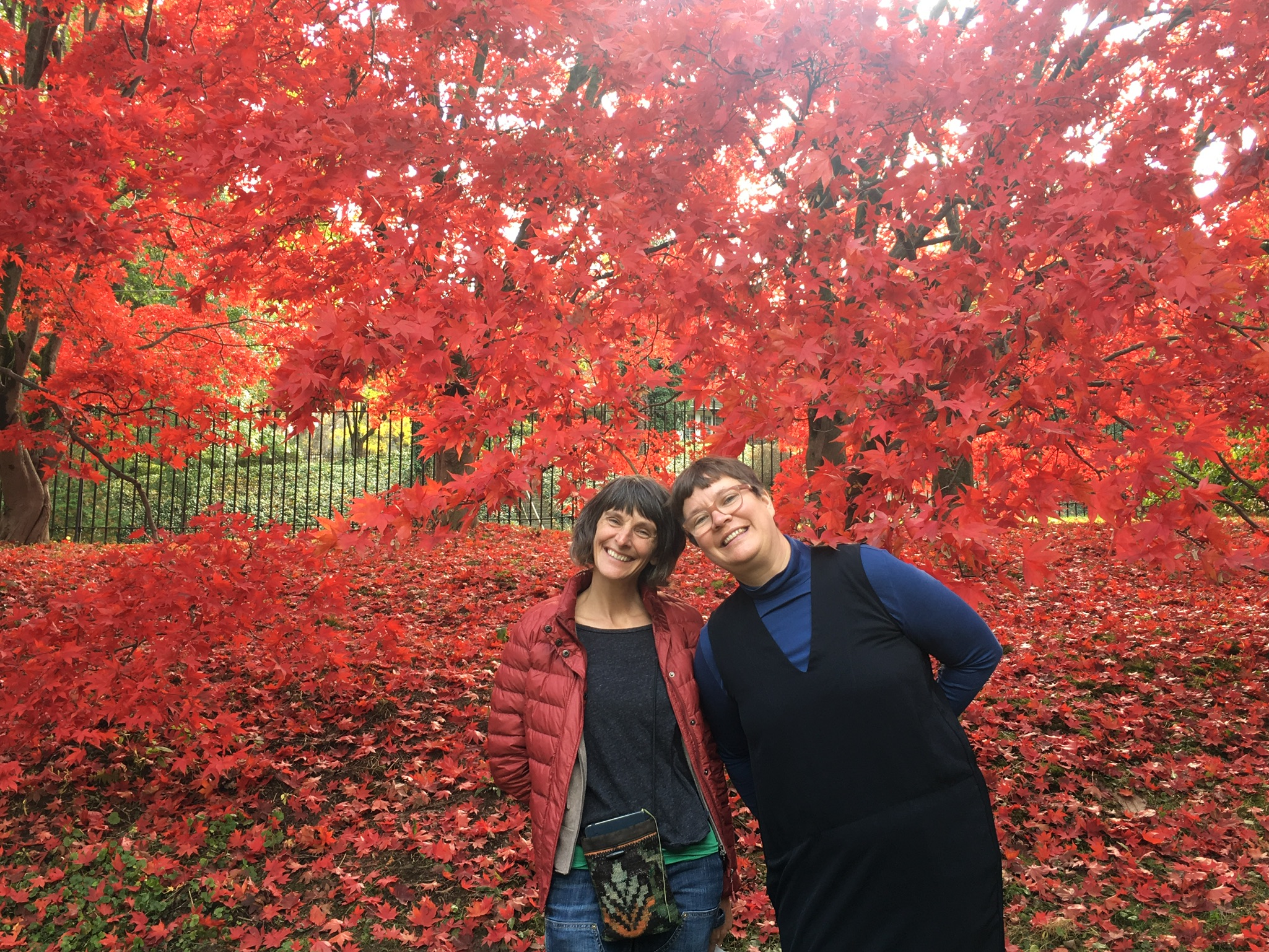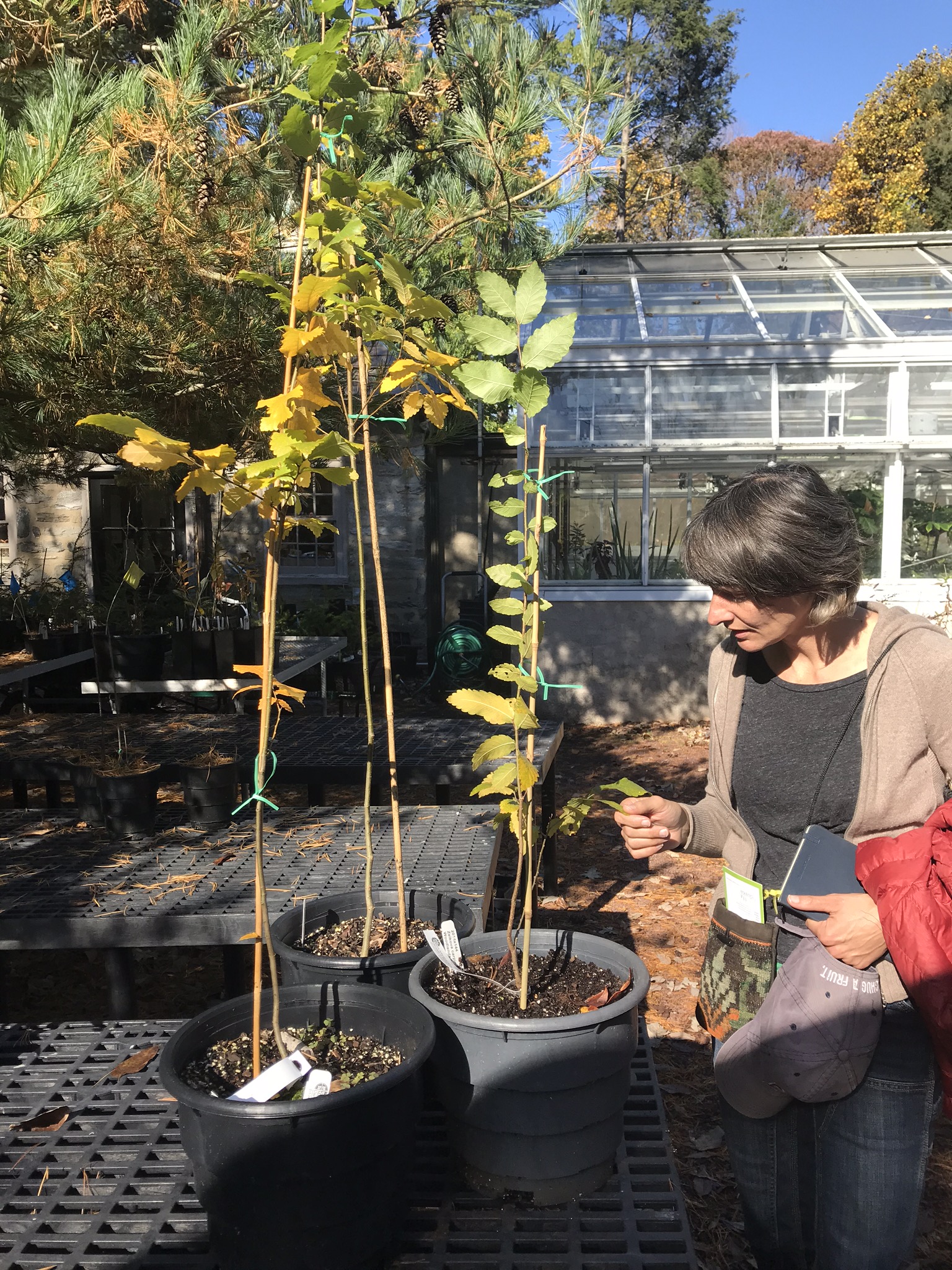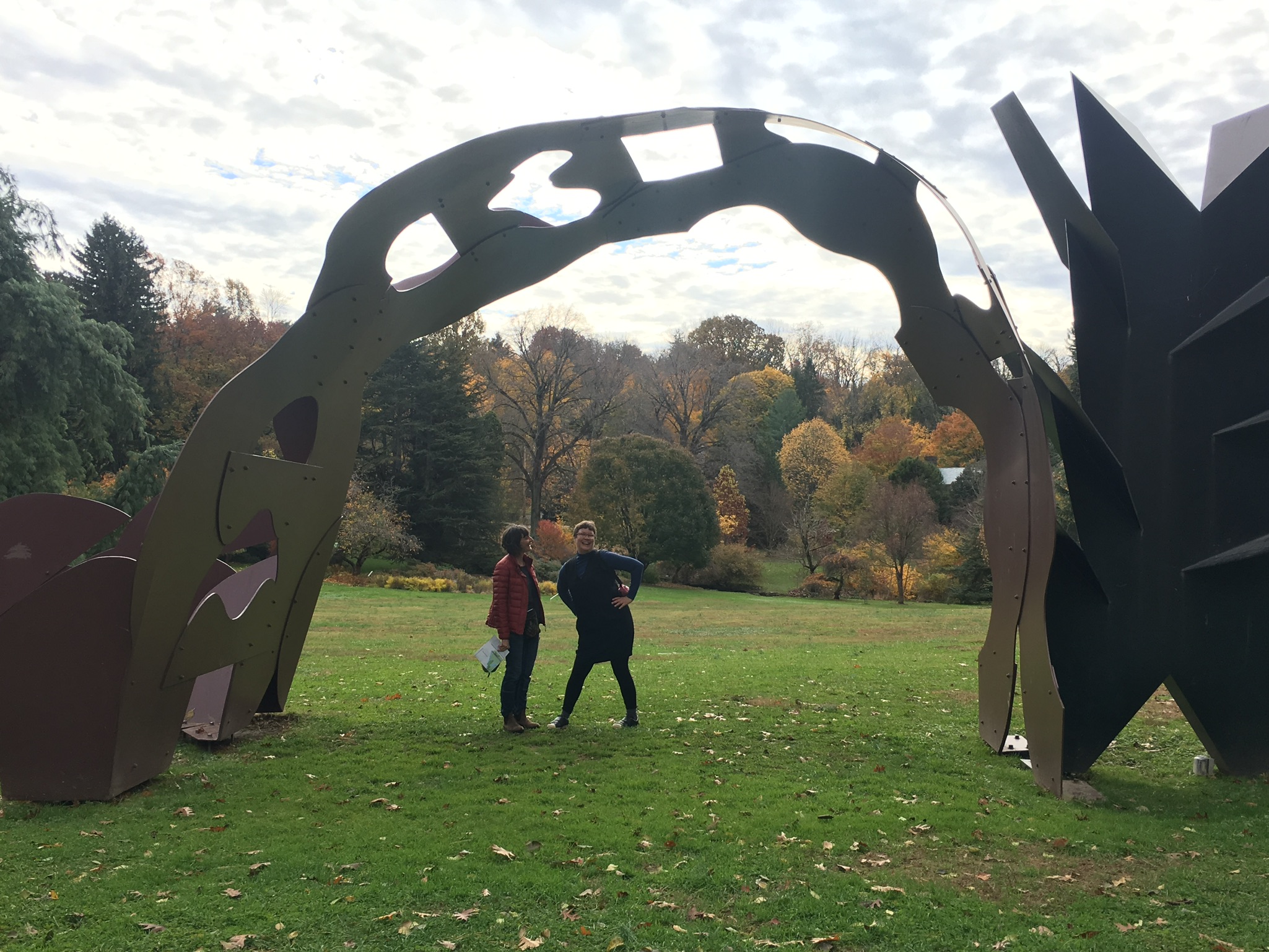In 1876 Eli K. Price, one of the founders of The Woodlands Cemetery Company, wrote in The Gardener’s Monthly:
“These trees will be cared for and preserved in the Woodlands. What is more important is, that they should be secured to our country by propagation. If seed should appear next Fall, they will be gathered. In the meantime grafting should be attempted. Mr. Sargent is trying it at Cambridge, on English elms. I invite gardeners to get cuttings and try their success.”
Carrying this ethos into the twenty first century, Executive Director Jessica Baumert reached out to Philadelphia’s tree experts in 2014 for help propagating some of the significant trees of The Woodlands as Dutch Elm Disease took hold in the Grove of Seven Giants. Tony Aiello of Morris Arboretum of the University of Pennsylvania graciously offered their propagation facilities and this fall The Woodlands staff took a field trip to visit the resulting Caucasian Zelkova (Zelkova carpinifolia) and English Elm (Ulmus procera) saplings. In the expert hands of Morris propagators Shelley Dillard and Steve Pyne, cuttings taken in the summer of 2014 are now growing ready to be planted back at The Woodlands.
While unassuming in appearance now, these toddler trees have formidable ancestors. English Elms and Caucasian Zelkovas have been part of The Woodlands landscape since William Hamilton’s time. More recently the English Elm grove of Seven Giants was one of the oldest remaining of its kind before succumbing to Dutch Elm disease in 2014 and 2016. It will be a challenge to reestablish an elm grove at The Woodlands because the disease is on the property, but for now the genetic material of the Grove of Seven Giants lives on.
Remaining four trunks of the Grove of Seven Giants. Photo taken by Ryan Collerd at the English Elm Memorial Service in March, 2017.
The Caucasian Zelkova near the Hamilton Mansion is perhaps The Woodlands most photogenic tree resident. Native to the Caucasus region of Eurasia, this species of zelkova was introduced to North America by William Hamilton. Visitors to Hamilton described a double row along the driveway between the Stable and Mansion. Can you imagine walking through a tunnel of eight of our fairytale trees? By 1916 only one Hamilton’s planting was still living and by 1921 it was also dead. The Caucasian Zelkova lived on, however, in the form of root suckers of one of those original trees which grew into the specimen we see today.
Just as contemplating the lives of Hamilton’s era or the many people buried here can connect us to the community and history of this site, so can consideration of its trees. Our trees bear witness from the past with scars from injury or trunks leaning out of the shade of a neighbor tree no longer there. They also enrich the present by providing wildlife habitat, cooling shade, and cleaner air (not to mention beauty). And best of all, each year’s new growth reminds us of their resilience and durable presence.
Planting the next generation of English Elms and Caucasian Zelkovas in 2019 will coincide with The Woodlands’ pursuit of arboretum accreditation. The accreditation process involves updating our tree database with recent additions and losses as well as formalizing our policies for caring for and building our collection of over 1,000 trees. We look forward to sharing our progress as we continue caring for the horticultural legacy of The Woodlands, and in the meantime, please enjoy these photos from our recent trip to the Morris Arboretum.
Written by Robin Rick, Facilities and Landscape Manager












